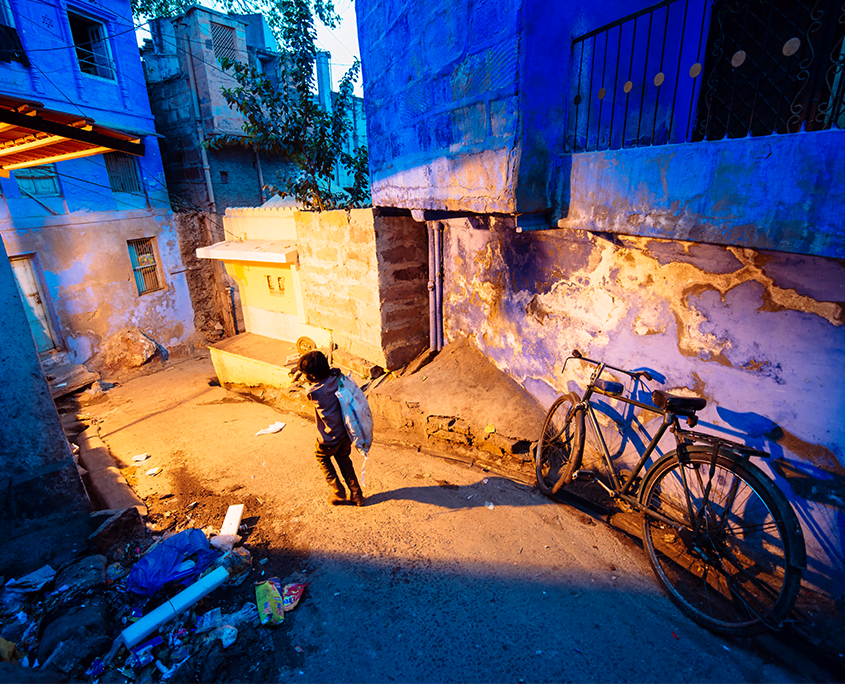A little boy carrying large bag on the narrow streets of Jodphur, India
Photo Credit: ferrantraite/iStock/Getty Images
World Day Against Child Labour
The International Labour Organisation (ILO) launched the World Day Against Child Labour in 2002 to focus attention on the global extent of child labour and the action and efforts needed to eliminate it. Each year on 12 June, the World Day Against Child Labour brings together governments, employers and workers’ organizations, civil society, as well as millions of people from around the world to highlight the plight of child labourers and what can be done to help them.
On this World Day, we will also look forward towards the UN Sustainable Development Goal Target 8.7 set by the international community calling for the global community to: “Take immediate and effective measures to eradicate forced labour, end modern slavery and human trafficking and secure the prohibition and elimination of the worst forms of child labour, including recruitment and use of child soldiers, and by 2025 end child labour in all its forms.”
The World Day Against Child Labour 2019 theme is children shouldn’t work in fields but on dreams! Yet today, 152 million children are still in child labour.
While child labour is common in all agricultural sub-sectors, whether farming, fishing and aquaculture, forestry or livestock production, it is crucial to emphasize that, according to the International Labour Organisation, agriculture is one of the three most dangerous sectors to work in, independent of the age of the worker. Statistically, the agricultural industry is characterized by high levels of work-related fatalities, non-fatal accidents and occupational diseases.
The dangerous nature of agricultural work presents a higher risk for children, who, in comparison with adults, will often lack the physical abilities, experience or judgment to be able to ensure their safety. Furthermore, certain activities have a different effect on children than on adults.
Indeed, until the late teens, children’s minds and bodies are still developing and therefore they absorb toxic substances more easily, retaining them longer. The growth and functioning of their nervous system can be impaired by certain agricultural chemicals. Children also have higher energy and fluid requirements and are more susceptible to dehydration. Some of the effects may not become evident until adulthood. The physical strain and repetitive movements associated with many agricultural tasks can deform bones and injured ligaments and muscles, especially in the back, causing life-long disabilities.”
The fundamental rights of the child as survival, education, protection and development are grossly violated by child labour. The root cause of child labour is extreme poverty which forces the parents to employ their children for some extra money for daily living.
Child labour affects the lives of roughly 150 million children worldwide. These children have been forced to give up school, sports, play and sometimes even their families and homes to work under dangerous, harmful and abusive conditions. Many children are engaged in paid and unpaid forms of work worldwide but are classified as child labourers when the work is considered hazardous or the child is underage.
According to a Global Report, “A future without Child Labour”, by the International Labour Organisation (ILO), the worst forms of child labour are much more widespread than was previously thought. It says 180 million children are engaged in what the ILO defines as the worst forms of child labour. One child out of every eight children in the world is either performing hazardous work or being trafficked, forced to work, held in debt bondage, enslaved, forcibly recruited for armed conflicts or involved in prostitution or pornography.
In agriculture, 70% of children can be found working here. It is a sector with some of the highest accident rates in the developed and developing world, often without any social safety net for those struggling to survive. (ILO, 2019)
Child labour not only undermines the individual development of a child but also robs society of its contribution to help break a cycle of poverty.



